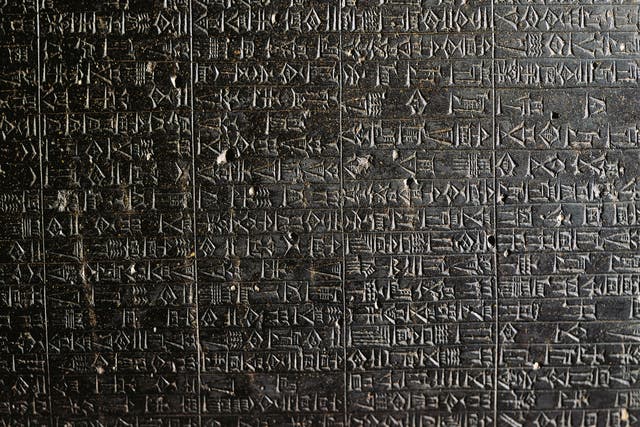

The Code of Hammurabi was one of the earliest and most complete written legal codes and was proclaimed by the Babylonian king Hammurabi, who reigned from 1792 to 1750 B.C. Hammurabi expanded the city-state of Babylon along the Euphrates River to unite all of southern Mesopotamia. The Hammurabi code of laws, a collection of 282 rules, established standards for commercial interactions and set fines and punishments to meet the requirements of justice. Hammurabi’s Code was carved onto a massive, finger-shaped black stone stele (pillar) that was looted by invaders and finally rediscovered in 1901.
History Lists: Ancient Empire BuildersHammurabi was the sixth king in the Babylonian dynasty, which ruled in central Mesopotamia (present-day Iraq) from c. 1894 to 1595 B.C.
His family was descended from the Amorites, a semi-nomadic tribe in western Syria, and his name reflects a mix of cultures: Hammu, which means “family” in Amorite, combined with rapi, meaning “great” in Akkadian, the everyday language of Babylon.
In the 30th year of his reign, Hammurabi began to expand his kingdom up and down the Tigris and Euphrates river valley, overthrowing the kingdoms of Assyria, Larsa, Eshunna and Mari until all of Mesopotamia was under his sway.
Hammurabi combined his military and political advances with irrigation projects and the construction of fortifications and temples celebrating Babylon’s patron deity, Marduk. The Babylon of Hammurabi’s era is now buried below the area’s groundwater table, and whatever archives he kept are long dissolved, but clay tablets discovered at other ancient sites reveal glimpses of the king’s personality and statecraft.
One letter records his complaint of being forced to provide dinner attire for ambassadors from Mari just because he’d done the same for some other delegates: “Do you imagine you can control my palace in the matter of formal wear?”
The black stone stele containing the Code of Hammurabi was carved from a single, four-ton slab of diorite, a durable but incredibly difficult stone for carving.
At its top is a two-and-a-half-foot relief carving of a standing Hammurabi receiving the law—symbolized by a measuring rod and tape—from the seated Shamash, the Babylonian god of justice. The rest of the seven-foot-five-inch monument is covered with columns of chiseled cuneiform script.
The text, compiled at the end of Hammurabi’s reign, is less a proclamation of principles than a collection of legal precedents, set between prose celebrating Hammurabi’s just and pious rule. Hammurabi’s Code provides some of the earliest examples of the doctrine of “lex talionis,” or the laws of retribution, sometimes better known as “an eye for an eye.”
The collection of laws and regulations carved into stone thousands of years ago carries principles and ideas that are still applied today.
The ancient Babylonian king ruled with military and diplomatic finesse—and he also knew a thing or two about self‑promotion.
Find out more about the fascinating history behind one of antiquity’s most important legal codes.
In 1901 Jacques de Morgan, a French mining engineer, led an archaeological expedition to Persia to excavate the Elamite capital of Susa, more than 250 miles from the center of Hammurabi’s kingdom.
There they uncovered the stele of Hammurabi—broken into three pieces—that had been brought to Susa as spoils of war, likely by the Elamite king Shutruk-Nahhunte in the mid-12th century B.C.
The stele was packed up and shipped to the Louvre in Paris, and within a year it had been translated and widely publicized as the earliest example of a written legal code—one that predated but bore striking parallels to the laws outlined in the Hebrew Old Testament.
The U.S. Supreme Court building features Hammurabi on the marble carvings of historic lawgivers that lines the south wall of the courtroom.
Although other subsequently-discovered written Mesopotamian laws, including the Sumerian “Lipit-Ishtar” and “Ur-Nammu,” predate Hammurabi’s by hundreds of years, Hammurabi’s reputation remains as a pioneering lawgiver who worked—in the words of his monument—”to prevent the strong from oppressing the weak and to see that justice is done to widows and orphans.”
From Egypt to Greece, explore fascinating documentaries about the ancient world.